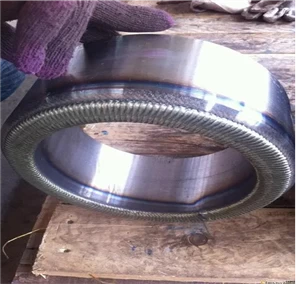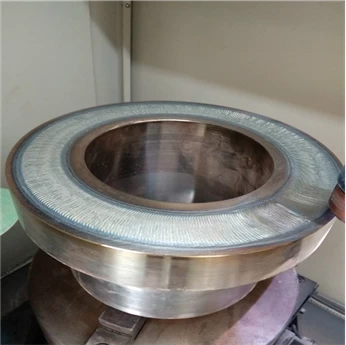Selection of Welding Materials for Valve Sealing Surfaces
The sealing surfaces of steel valves are generally manufactured using the overlay welding method. The materials used for valve overlay welding are divided into four major categories based on alloy types: cobalt-based alloys, nickel-based alloys, iron-based alloys, and copper-based alloys. These alloy materials are made into welding rods, welding wires (including flux-cored wires), fluxes (including transition alloy fluxes), and alloy powders. Overlay welding methods such as manual arc welding, oxyacetylene flame welding, tungsten inert gas (TIG) welding, submerged arc automatic welding, and plasma arc welding are used.

The selection of materials for valve sealing surface overlay welding is generally based on factors such as the operating temperature and pressure of the valve, the corrosiveness of the medium, the type of valve, the structure of the sealing surface, the sealing pressure ratio, the allowable pressure ratio, the production and manufacturing conditions of the company, the equipment processing capabilities, welding technology capabilities, and user requirements. Optimization design should also be used to select sealing surface materials that are low in price, have simple production processes, and high production efficiency while meeting the performance requirements of valve usage.
For some materials used for valve sealing surface overlay welding, there is only one form available, such as welding rods or welding wires or alloy powders, and therefore only one overlay welding method can be used. Some materials are made into various forms, such as Stellite 6 alloy, which has welding rods (D802), welding wires (HS111), and alloy powders (PT2102), allowing for multiple overlay welding methods such as manual arc welding, oxyacetylene flame welding, TIG welding, wire feeding plasma arc welding, and powder plasma arc welding. When selecting materials for valve sealing surface overlay welding, consideration should be given to selecting overlay welding methods that are technically mature, have simple processes, and high production efficiency within the company, thereby ensuring the achievement of its performance in sealing surface overlay welding manufacturing.
The sealing surface is a critical part of the valve, and its quality directly affects the service life of the valve. Reasonable selection of materials for valve sealing surfaces is one of the important ways to improve the service life of valves. When selecting materials for valve sealing surfaces, one should avoid falling into misconceptions.
Misunderstanding 1: The hardness of the valve sealing surface material is high, and its wear resistance is good.
Experiments have shown that the wear resistance of the valve sealing surface material is determined by the structure of its metal material. Some metal materials with austenite as the matrix and a small amount of hard phase structure are not very hard, but they have good wear resistance. The valve sealing surface has a certain high hardness to avoid being scratched and scratched by hard debris in the medium. Comprehensive consideration, the hardness value HRC35~45 is appropriate.
Misunderstanding 2: The price of the valve sealing surface material is high and its performance is good.
The price of a material is its own commodity characteristic, while the performance of a material is its physical characteristic, and there is no necessary connection between the two. The metal cobalt in the cobalt-based alloy comes from imports, and the price is high, so the price of the cobalt-based alloy material is high. Cobalt-based alloys are characterized by good high-temperature wear resistance, but when used in normal temperature and medium temperature conditions, the price/performance ratio is relatively high. When selecting the material of the valve sealing surface, the material with lower price/performance should be selected.
Misunderstanding 3: If the valve sealing surface material has good corrosion resistance in a certain strong corrosive medium, it must be suitable for other corrosive media.
The corrosion resistance of metal materials has its complex mechanism such as titanium check valve. A material has good corrosion resistance in a certain strong corrosive medium, but if the conditions change slightly, such as changes in temperature or medium concentration, the corrosion resistance will change. For another corrosive medium, its corrosion resistance changes even more. The corrosion resistance of metal materials can only be known through experiments, and the relevant conditions must be understood for reference to relevant materials, and must not be used blindly.

 +86 512 68781993
+86 512 68781993 


















